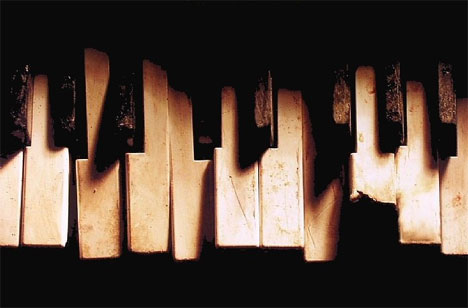Transposing Levi
How can we fix modern worship? Nearly all debate on this subject overlooks what the Bible has to say.
In From Silence to Song, Peter Leithart justifies the practice of finding patterns for our worship in the Levitical rites in the fact that King David did precisely this.
“…sacrificial worship did not cease with the coming of the New Covenant, but was transformed into a “spiritual sacrifice” and “sacrifice of praise.” We now do different things than ancient Israelites did, but those actions have the same meaning as the actions in the Levitical ceremonies.
We no longer slaughter bulls and goats for blood purification but we do confess our sins so as to be cleansed (1 John 1:9-8). We no longer dismember animals before the Lord’s table, but instead the Word cuts us into pieces so that we may be offered as sacrifices (Heb. 4:11-12). We no longer keep Passover but we celebrate the Lord’s Supper, which fulfills Passover (among other things) and may be described as a Christian Passover. This same “transposition” from an Old to a New Covenant key can be applied to other rituals of the Levitical system. We understanding what we are doing in worship through the categories of the sacrificial system, under the metaphor of sacrifice.
Not everyone is convinced that the sequence of sacrifices provides an authoritative pattern for Christian worship. While praising James Jordan’s liturgical work for its creativity, John Frame is skeptical that we can derive “strict rules for the order of worship” from “symbolism.”
Though it may be insufficient to convince Prof. Frame the texts concerned with Davidic worship support Jordan’s (and others’) use of symbols and patterns from Leviticus. In the Davidic system as described by Chronicles, we find an example—a canonical example, mind you—of a similar process of transformation. As noted above, David cited the Mosaic sacrificial law to give warrant to worship that heavily emphasized music rather than animal offering… The sacrificial terms are employed to describe Davidic worship in a number of respects.
Like the burned portion of a tribute offering, music was a “memorial”; when the Levites played instruments and sang they were “standing to serve” as the law required; their divisions were described as “watches,” and their singing was considered a new form of “labor,” analogous to the transport of the tabernacle during the Mosaic period. In short, we see already in David’s time the Old Testament origins of the idea of a “sacrifice of praise,” and Chronicles shows that this notion grows out of an application of the sacrificial law. This example gives us plenty of warrant to explore how other aspects of the Levitical ceremony might guide the theology and practice of Christian worship.” (pp. 110-111)
Of course, the patterns in the Levitical rites can be traced back through the structure of the Covenants to the structure of Genesis 1, and, even beyond that, to the “architecture” of the Holy Trinity.



























June 28th, 2011 at 12:23 pm
You would REALLY like this series on worship my old pastor is doing:
http://faithtacoma.org/series/worship.aspx
Sermons #3 and #7 are about exactly this.
June 28th, 2011 at 12:26 pm
Thanks Robert – I’ll check it out!